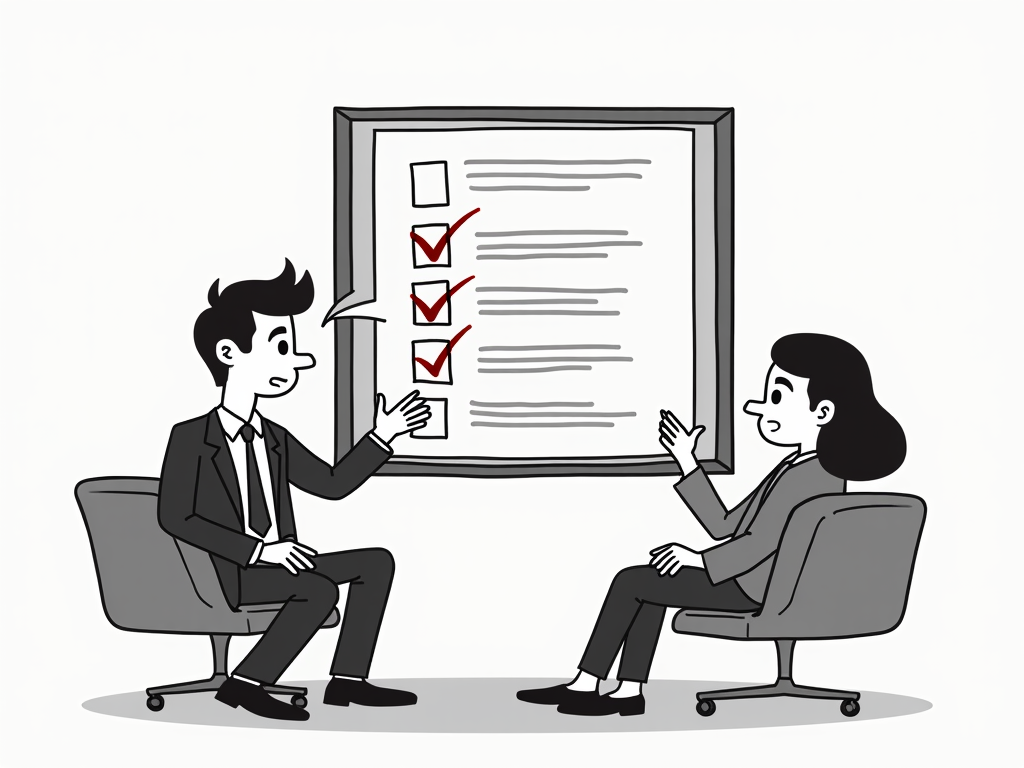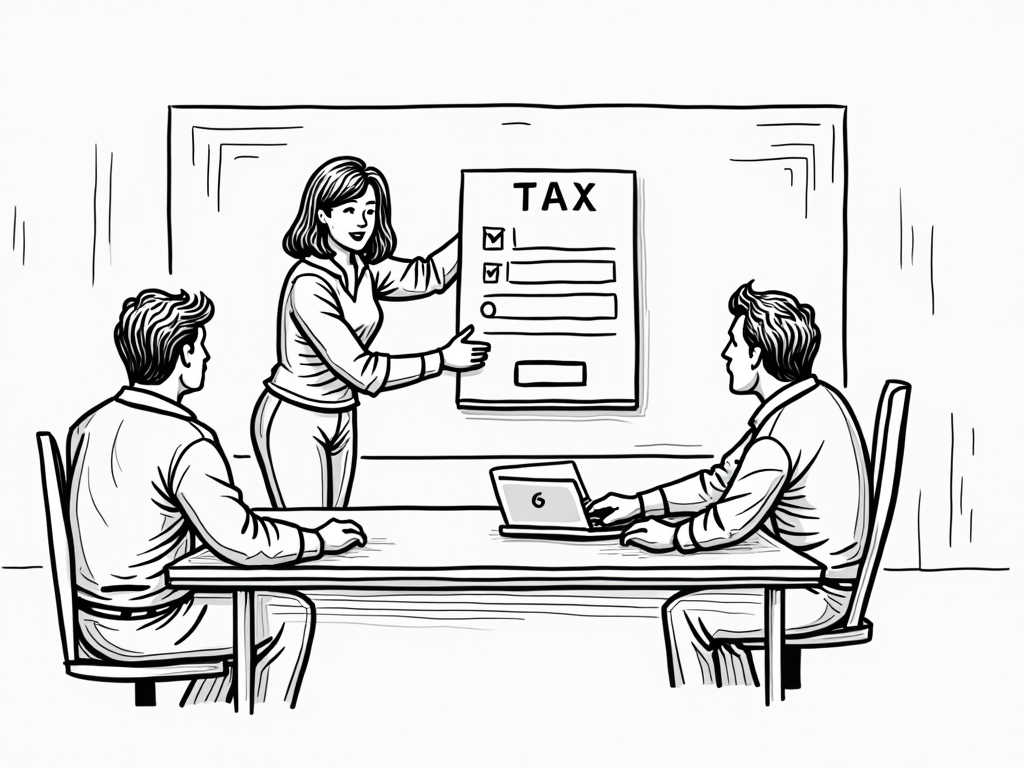
VAT Compliance in Germany: Navigating the Regulatory Landscape for Business Success
Reading time: 12 minutes
Table of Contents
- Introduction: The German VAT Framework
- VAT Registration Requirements and Thresholds
- Understanding German VAT Rates and Classifications
- VAT Filing and Payment Obligations
- Common VAT Compliance Mistakes and How to Avoid Them
- Digital Solutions for VAT Management
- Cross-Border Considerations: EU and International Transactions
- Conclusion: Building a Sustainable VAT Compliance Strategy
- Frequently Asked Questions
Introduction: The German VAT Framework
Navigating the German VAT (Umsatzsteuer) system can feel like traversing an unfamiliar forest with a map written in technical jargon. Yet, for businesses operating in Europe’s largest economy, mastering this terrain isn’t optional—it’s essential for survival and growth.
The German VAT system is known for its precision, complexity, and strict enforcement. With penalties for non-compliance potentially reaching into thousands of euros and the risk of business disruption, understanding VAT obligations isn’t just about tax efficiency—it’s about business continuity.
As a tax professional with over a decade of experience guiding companies through German tax regulations, I’ve witnessed firsthand how VAT compliance challenges can blindside even the most diligent business operators. The good news? With strategic preparation, these challenges become manageable hurdles rather than business-threatening obstacles.
Let’s be clear: This isn’t about achieving perfect compliance from day one—that’s rarely realistic. Instead, it’s about building robust systems that grow with your business, identifying risk areas before they become problems, and knowing where to focus your compliance efforts for maximum impact.
VAT Registration Requirements and Thresholds
Let’s start with the fundamental question: Does your business need to register for German VAT at all? The answer depends on several factors, and getting this wrong can lead to either unnecessary administrative burden or significant compliance failures.
Domestic Businesses: When Registration Becomes Mandatory
For businesses established in Germany, VAT registration is generally required when your annual turnover exceeds €22,000 in the previous calendar year or is expected to exceed €50,000 in the current year. However, small businesses (Kleinunternehmer) can opt for an exemption if they meet certain criteria.
Pro Tip: The Kleinunternehmer regulation may seem attractive due to reduced paperwork, but it prevents you from reclaiming input VAT on your purchases. For businesses with significant investments or costs, this can actually increase your effective tax burden.
Consider this real-world scenario: A Berlin-based graphic designer started freelancing with occasional projects, staying below the VAT threshold. When business picked up unexpectedly mid-year, she failed to monitor her approaching the €22,000 threshold. By year-end, she faced retroactive VAT registration requirements, penalties, and the challenge of recalculating all her previous invoices.
Foreign Businesses: Distance Selling and B2B Considerations
For businesses outside Germany but within the EU, the rules became significantly clearer with the 2021 introduction of the One Stop Shop (OSS) system. Previously, businesses needed to track sales thresholds for each EU country separately. Now, a €10,000 combined threshold applies across all EU countries for B2C sales.
For non-EU businesses, the requirements are even more straightforward—essentially, there is no threshold. If you make taxable supplies in Germany, registration is typically required from the first transaction.
According to Dr. Klaus Weber, Partner at a leading German tax advisory firm: “One of the most common mistakes we see with international businesses is assuming that because they don’t have a physical presence in Germany, they don’t have VAT obligations here. This misunderstanding has led to significant compliance issues, particularly in digital services and e-commerce.”
Understanding German VAT Rates and Classifications
Germany operates with three VAT rates, and applying the correct rate to your goods or services is crucial for compliance. Let’s break them down:
| VAT Rate | Application | Common Examples | Key Considerations | Common Errors |
|---|---|---|---|---|
| 19% (Standard) | Most goods and services | Electronics, clothing, standard consulting services | Default rate unless specifically classified otherwise | Incorrectly applying reduced rates to borderline cases |
| 7% (Reduced) | Essential goods, cultural items | Food, books, newspapers, public transport | Specific categories defined in VAT Act Annex 2 | Misclassifying similar but distinct products |
| 0% (Zero-rated) | Exports, certain international services | Goods exported outside the EU, international transportation | Requires specific documentation for validation | Insufficient evidence for export/cross-border provision |
| Exempt (not a rate) | Financial services, healthcare, education | Banking, medical services, educational courses | No VAT charged, but generally no input VAT recovery | Treating exemption as zero-rating (fundamental difference) |
Classification Challenges and Borderline Cases
The classification system appears straightforward until you encounter borderline cases. Consider these real-world examples:
- Digital Books vs. Physical Books: Physical books qualify for the 7% reduced rate, while e-books were historically charged at 19%. Following legislative changes in 2020, e-books now also qualify for the 7% rate, but only if they meet specific criteria.
- Food Classifications: A café owner in Munich learned the hard way that coffee sold for immediate consumption was taxed at 19%, while the same coffee beans sold for home use qualified for 7%.
According to the German Federal Tax Office statistics, approximately 18% of VAT-related assessments involve rate classification errors, making this one of the highest-risk areas for businesses.
Practical Approach: When in doubt about classification, consider obtaining a binding ruling (verbindliche Auskunft) from the tax authorities. While this process takes time and may involve fees, it provides legal certainty that can prevent costly mistakes.
VAT Filing and Payment Obligations
Once registered, your business faces ongoing compliance requirements that vary based on your circumstances and turnover levels. Misunderstanding these obligations is one of the primary causes of penalties.
Filing Frequency and Deadlines
German VAT returns operate on various schedules depending on your previous tax amounts:
- Monthly Returns: Required if your previous year’s VAT liability exceeded €7,500
- Quarterly Returns: Applicable if your previous year’s VAT liability was below €7,500
- Annual Returns: Required for all VAT-registered businesses as a reconciliation
The standard deadline for monthly and quarterly returns is the 10th day of the following month, with an automatic extension to the 10th of the month after if you file preliminary returns electronically. Annual returns are generally due by July 31 of the following year, unless prepared by a tax advisor, which extends the deadline typically to February 28 of the second following year.
Case Study: A growing tech startup in Hamburg struggled with timely filings as their business expanded internationally. They implemented a dedicated tax calendar with automated alerts two weeks before each deadline, with specific team members assigned responsibility. This simple system reduced their late filing instances from six per year to zero, avoiding approximately €5,000 in annual penalties.
Payment Methods and Advance Payments
The German tax system operates on a self-assessment basis, meaning you calculate your VAT liability, file the return, and make the payment without waiting for an assessment. This responsibility places the compliance burden firmly on your business.
Payments must be received by the tax authority by the filing deadline. The preferred payment method is SEPA direct debit (Lastschriftverfahren), which provides certainty of timely payment. Bank transfers are also accepted but must be initiated with sufficient time for processing.
In certain cases, the tax office may require advance payments (Sondervorauszahlung) equal to 1/11 of the previous year’s VAT payments. This requirement is often waived for businesses with consistent compliance records.
Common VAT Compliance Mistakes and How to Avoid Them
Even diligent businesses can fall into VAT compliance traps. Here are the most common mistakes I’ve observed and strategies to avoid them:
Documentation and Record-Keeping Failures
German tax authorities are known for their thorough audits, and inadequate documentation is a fast track to adjustments and penalties.
Common Issue: Insufficient evidence for zero-rated exports or intra-Community supplies.
Solution Approach: Implement a comprehensive checklist for each transaction type. For exports, this should include:
- Commercial invoice with VAT ID numbers
- Transportation documentation
- Customs documentation (for non-EU exports)
- Proof of payment
- Customer confirmation of receipt (when possible)
According to a 2023 survey by the German Chamber of Industry and Commerce, 62% of businesses that faced export-related VAT adjustments during audits did so because of documentation issues rather than substantive non-compliance.
Input VAT Recovery Errors
Claiming input VAT incorrectly—either too much or too little—is another major compliance risk area.
Common Issue: Claiming input VAT on non-deductible expenses or without proper supporting invoices.
Solution Approach: Implement a multi-stage verification process for incoming invoices:
- Initial screening for formal invoice requirements
- Classification of expense type and deductibility status
- Periodic review of high-value or unusual claims
Case Study: A manufacturing company in Baden-Württemberg discovered during an internal review that they had been failing to claim input VAT on certain imported materials due to miscommunication between their procurement and accounting departments. By implementing standardized processes and regular reconciliations, they recovered €45,000 in previously unclaimed input VAT and improved their ongoing cash flow position.
Special Scheme Misapplication
Germany offers several special VAT schemes, including:
- Margin scheme for second-hand goods
- Tour operators’ scheme
- Cash accounting scheme for small businesses
Using these incorrectly—or failing to use them when advantageous—can lead to significant compliance issues.
Common Issue: Incorrectly applying the margin scheme by calculating margin at aggregate level rather than per item.
Solution Approach: Seek specialist advice when using special schemes, even if it seems straightforward. The nuances of these schemes often reveal complexities not evident at first glance.
Digital Solutions for VAT Management
The digitalization of tax compliance in Germany has been accelerating, making manual processes increasingly impractical and risk-prone. The right digital solutions can transform VAT compliance from a burdensome obligation to a streamlined process.
Software Selection Considerations
Not all tax software is created equal, especially for German VAT compliance. Key features to evaluate include:
- ELSTER Integration: Direct connectivity with Germany’s official electronic tax filing system
- Multi-Entity Management: Ability to handle multiple legal entities if your business structure requires this
- VAT Rate Determination Tools: Automated assistance with product/service classification
- Reconciliation Capabilities: Automated checks between financial accounting and VAT returns
- Audit Trail Documentation: Comprehensive record-keeping that withstands scrutiny
When evaluating solutions, consider both immediate needs and future requirements as your business grows or expands internationally.
Integration with Broader Financial Systems
The most effective VAT compliance approach integrates tax processes with your broader financial systems rather than treating them as separate functions.
Best Practice: Ensure your VAT software communicates seamlessly with:
- General ledger and financial accounting systems
- E-commerce platforms (if applicable)
- Customer relationship management systems
- Inventory and supply chain management tools
According to technology research firm Gartner, businesses that integrate tax processes with their broader financial systems experience 64% fewer compliance errors and save approximately 35% in compliance-related costs compared to those using standalone solutions.
Cross-Border Considerations: EU and International Transactions
For businesses engaged in cross-border trade, German VAT compliance becomes significantly more complex, particularly with the continuous evolution of EU VAT rules.
Intra-Community Transactions
Supplies between VAT-registered businesses in different EU countries generally follow the reverse charge mechanism, shifting the VAT liability to the recipient. However, this requires careful documentation and reporting.
Key compliance elements include:
- EC Sales Lists (Zusammenfassende Meldung) for B2B goods and services
- Intrastat declarations for goods crossing borders (if above reporting thresholds)
- Valid customer VAT numbers verified through the VIES system
Common Pitfall: Failing to distinguish between goods and services in EC Sales Lists, which follow different reporting rules.
Martin Schmidt, Head of Indirect Tax at a leading German manufacturing company, shares: “The most challenging aspect of our EU transactions isn’t the basic VAT treatment—it’s keeping up with the constantly evolving reporting requirements across multiple member states. We’ve found that quarterly reviews of our cross-border compliance processes are essential to stay ahead of regulatory changes.”
Import and Export Procedures
Germany’s position as a major trading nation means many businesses engage in imports and exports outside the EU. These transactions involve both customs and VAT considerations that must be carefully managed.
For imports, you generally pay import VAT (Einfuhrumsatzsteuer) at the time of importation, which is then recoverable on your VAT return if the goods are used for taxable activities. Since 2018, Germany has implemented the Import One-Stop Shop (IOSS) for low-value goods, simplifying the process for certain import transactions.
For exports, proper documentation is crucial to support zero-rating. This includes:
- Export declaration (single administrative document)
- Commercial invoice
- Transportation documentation
- Proof of export endorsed by customs
Strategic Consideration: For businesses with significant import volumes, consider applying for customs procedures like deferred payment arrangements or, in some cases, authorized economic operator (AEO) status, which can improve cash flow and streamline processes.
Conclusion: Building a Sustainable VAT Compliance Strategy
Navigating German VAT compliance isn’t a one-time effort but an ongoing business process that requires attention, resources, and strategic thinking. The most successful approach combines thorough understanding, robust systems, and proactive management.
The costs of non-compliance—financial penalties, business disruption, reputational damage—far outweigh the investment required for proper VAT management. Yet compliance shouldn’t be viewed merely as a cost center. Effective VAT management can generate business benefits through improved cash flow, reduced audit risks, and even competitive advantages.
Consider developing a comprehensive VAT governance framework that includes:
- Clear responsibility assignments within your organization
- Regular training and updates on regulatory changes
- Periodic internal reviews and reconciliations
- Documented processes for each VAT-related activity
- Contingency plans for managing potential compliance issues
Remember, perfect compliance from day one is rarely achievable. The goal is continuous improvement and risk management. By approaching German VAT compliance strategically rather than reactively, you transform a potential business threat into a manageable operational process.
As you refine your approach, consider periodic professional reviews of your VAT processes—even businesses with sophisticated internal capabilities benefit from external perspectives that can identify blind spots or improvement opportunities.
The German VAT landscape will continue to evolve, particularly as digitalization advances and cross-border commerce grows. The most resilient businesses will be those that build adaptability into their compliance frameworks—ready to navigate whatever changes lie ahead.
Frequently Asked Questions
What are the consequences of late VAT registration in Germany?
Late VAT registration can result in multiple consequences. First, you’ll face retrospective VAT liabilities for the period you should have been registered, potentially with limited ability to recover corresponding input VAT if proper documentation wasn’t maintained. Second, you may incur late registration penalties ranging from €250 to €10,000 depending on the duration and circumstances. Finally, interest charges (typically 0.5% per month) apply to unpaid tax amounts. In severe cases involving intentional non-compliance, criminal proceedings could be initiated. To mitigate these consequences, voluntary disclosure before authorities discover the issue can sometimes result in reduced penalties.
How should foreign businesses handle German VAT refund claims?
Foreign businesses not registered for VAT in Germany but incurring German VAT on expenses can recover these amounts through specific refund procedures. EU businesses should use the electronic EU VAT refund system through their home country’s tax portal, while non-EU businesses must use the specific 13th Directive refund procedure by submitting form USt 1 T to the Bundeszentralamt für Steuern. Critical requirements include maintaining original invoices meeting German invoice requirements, submitting claims within strict deadlines (September 30 of the following year for EU businesses, June 30 for non-EU businesses), and ensuring your home country offers reciprocal VAT recovery rights to German businesses (for non-EU claimants). Refund claims are frequently rejected for formal reasons, so meticulous attention to procedural requirements is essential.
What special considerations apply to digital services providers selling to German customers?
Digital services providers face specific VAT requirements when selling to German customers. For B2C transactions, VAT is generally due in the customer’s location (Germany), requiring either VAT registration in Germany or use of the One-Stop Shop (OSS) system for EU-based providers. For B2B transactions, the reverse charge mechanism typically applies if the business customer is VAT-registered. Key compliance challenges include customer status verification (determining if they’re business or consumer customers), location determination (especially when customers use VPNs or have multiple addresses), and maintaining sufficient evidence of customer location and status for at least 10 years. Additionally, digital services providers must ensure their automated systems can handle German invoicing requirements, including appropriate time zone considerations for transaction dating and tax point determination.


